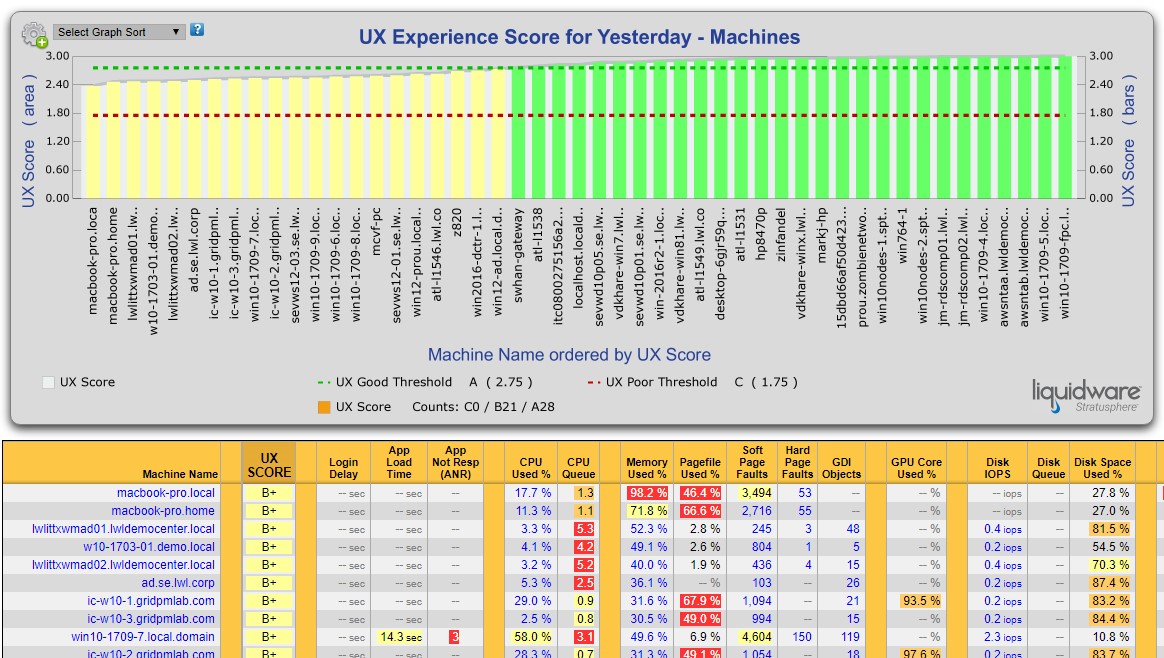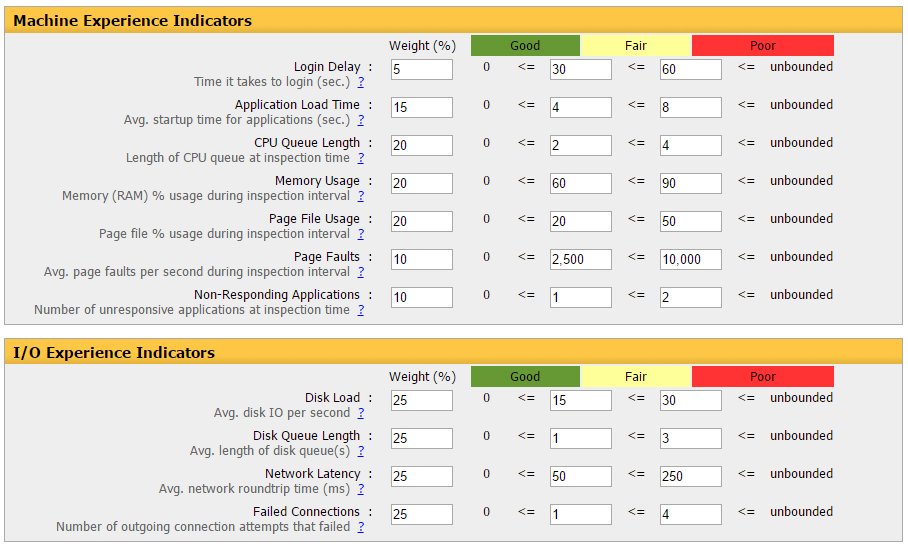User Experience is the hot buzz-phrase du jour. Vendors in the end user computing space want to associate their product with it. Often you’ll hear and see claims like, “we enhance user experience” or “we make desktop user experience better.” And while I agree with these sentiments, I can’t help but think the issue isn’t about flowery marketing language, but about taking the subjective and making it actionable for the benefit of IT operations.

Meeting user expectations and delivering user experience is hard. Translating what is inside your users head and defining IT process and operations around meeting these subjective desires can be an almost impossible goal without the right visibility detail. About a year ago I wrote about Baselining the User Experience and Defining a Measure of Success with Stratusphere UX. I wrote about the shift towards using user experience as a definition of success and the opportunity to define SLA and KPIs that can quantify your approach.
Where to Capture User Experience
Let’s get real. There is no true measure of user experience. It’s part technology and part managing human expectations. On the technology front, I’ve seen organizations who reactively manage by minimizing help desk complaints or define success when trouble-ticket numbers are down. Commonly and where metrics are involved, I see infrastructure utilization or uptime measurements employed as defined thresholds. If you follow my ramblings, you’ll know that I’m a strong advocate of Putting User Experience at the Center of the Workspace. In short, measurement inside each and every guest workspace as a means to define success is the purest and most accurate measure of user experience.
To support that end, the definition of user experience we promote is one that is based on a defined and measurable set of metrics captured within the workspace itself. There are places for synthetic monitoring of these indicators. And there are instances and IT functions that benefit from an infrastructure or applications performance monitoring (APM) view as well. But it’s the in-guest measure of user experience that ultimately provides you with a means to translate the subjective to something you can quantify and operationalize.
User Experience Defined
At the core of Stratusphere UX is the User Experience (UX) Profile. The UX Profile is a series of platform and Windows-delivery agnostic metrics that provides a measure, which is both best practice while allowing for the variability across organizations (more on that point in a bit). Combining machine and I/O experience indicators, the UX Profile score takes those elements that have an effect on user perceptions and defines a quantifiable composite metric that is leveraged throughout Stratusphere UX.

Stratusphere UX trends this score. The solution employs the UX Profile to alert, and prioritize users (machines and applications) that may require attention. It is used to initial narrow the field when looking to take a broad-to-narrow view of performance and identification of constraints—this is the case in many areas of the end user workspace, such as user onboarding, performance monitoring, help desk, platform design and optimization, and in many other areas of user lifecycle management.
The Stratusphere UX Profile creates a defined and quantifiable score that leverages industry best practices (minimizing CPU queuing, failed connections and non-responsive applications, for example) and other metrics that may vary, depending on the organization or industry (login delay, application load time and latencies, for example). The UX Profile score can be tailored to define where good versus fair and fair versus poor delineations are set as well as further customized to define weightings that best suit your organization. The measure is used to look at specific users at a single point in time, as well as in aggregate to examine all users for longer periods of time.
Overall, the UX Profile score is an important feature when looking to define end user computing success for user workspaces. It sets Stratusphere UX apart from more traditional infrastructure and APM monitoring tools and creates an opportunity to quantify success—ultimately benefiting all aspects of IT operations for workspaces; whether physical PCs, on-premises virtually delivered or cloud based. We’d love to learn more about how you define success for your end user workspaces. Write to us and share your end user challenges as it relates to meeting expectations and delivering user experience.








[…] recently posted about the Stratusphere UX Profile Score, and how it creates a defined and quantifiable composite metric that leverages industry best […]
[…] real time visibility, and whether it’s a necessity or red herring. I’ve also written about quantifying the user experience and putting user metrics at the center of your workspace visibility effort. And regardless of […]